Fire safety measures at home - flame retardant processing, rescue stairs, types of fire extinguishers.
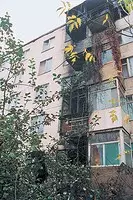
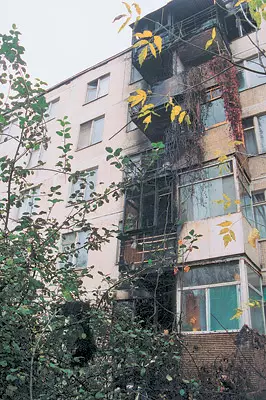
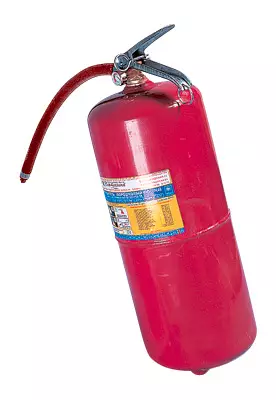
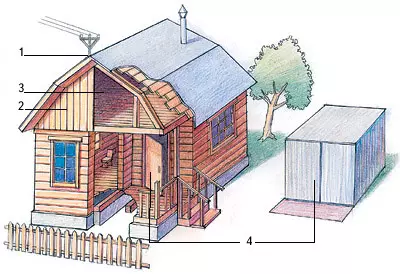
1- KL-1,
"Endotherm";
2- "FENILAKS", "SEZHEZH OGNEBIO PROF", "Pyrex", CSDA, CSD, baths-1;
3- "FENILAKS", "SEZHEZH OGNEBIO PROF", "PYPREX", CSDA, CSD, BATH-1, OZP-1, "Endoterm", "Filex";
4- "Proterm Styl", "Faeflex", "Endoterm", OZP-1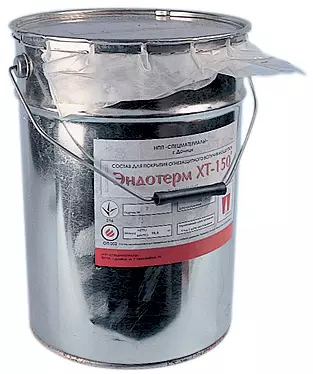
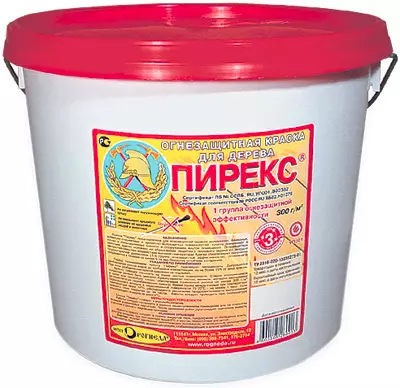
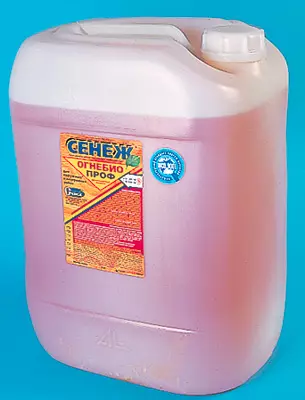
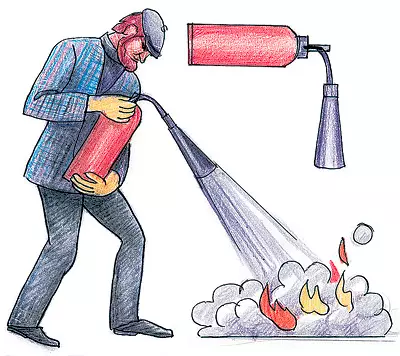
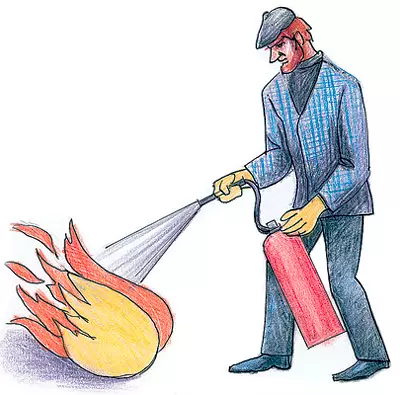
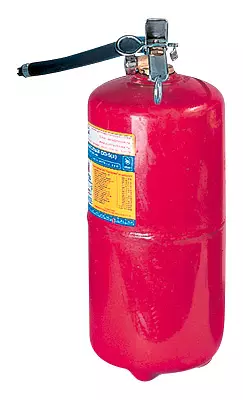
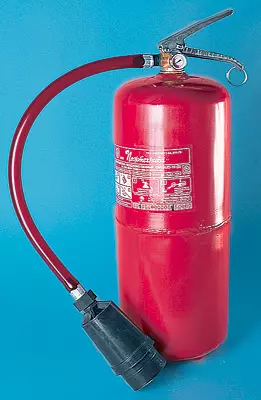
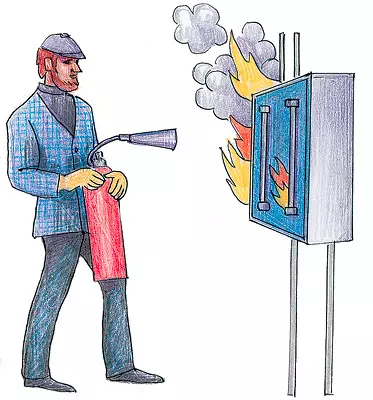
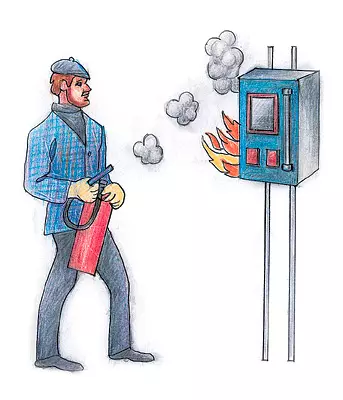

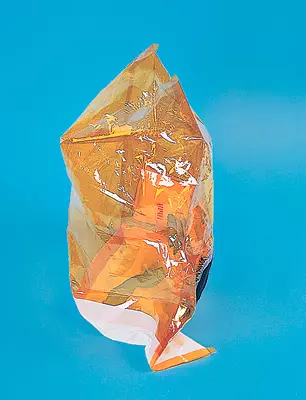
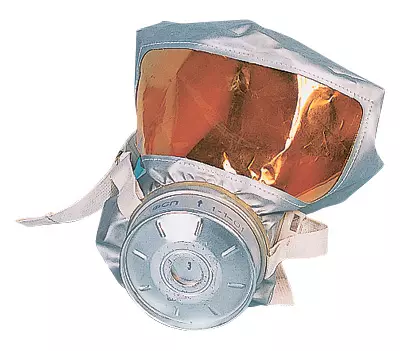
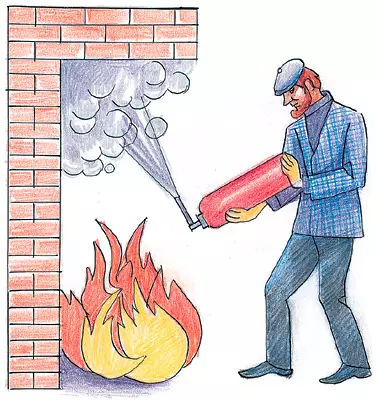
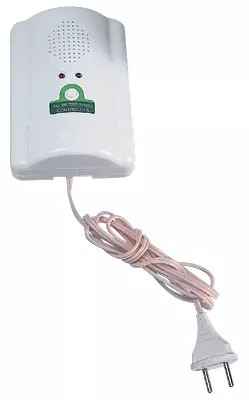
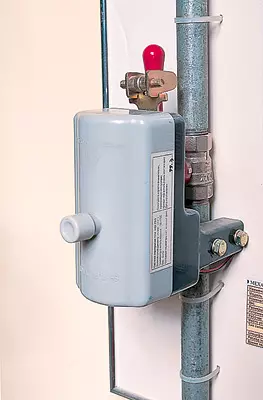
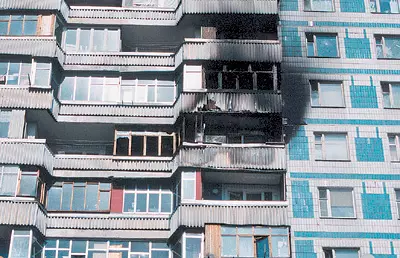
Build a house, as you know, only half the right, you must still be able to protect it. For example, from such a disaster, like a fire. We dedicate this review of elementary fire safety measures and primary fire extinguishing tools that should be in every home.
Basic Cause Fire- Human carelessness
(Ministry of Emergency Situations)
When it is necessary to take care of the fire safety at home
To think about the issue of fire safety, it is necessary at the "plan" stage. In other words, at that very moment when you are just going to build anything. At this stage, you determine the brick house to build or wooden, what is the foundation to do, how and how to heat the future of the home gas, electricity, or to arrange a furnace heating, whether to dig a well in the yard (drill a well) or connect to the village water pipeline IT.D. And the solution of each of these problems is one way or another associated with fire safety. Even if you do not suspect about it.The most important stage on which the facility fire safety is being resolved is the design. Fire safety standards are necessarily laid in the project (SNIP21.01-97 * "Fire safety of buildings and structures", SNiP 2.08.01-89 * "Residential buildings"). Meaning the location of the house in relation to neighboring buildings, its configuration, floors, material and design of walls, overlaps, coatings, opportunities for evacuation IT.P. Fire safety issues are solved even at stages, it seems to be directly related to them: electrician and ventilation, water supply and sewage. For example, with the "electrification" of the building, it is important to choose the key to choose the cross section of electrical wires with respect to the possible load, to provide an RCD and protective grounding. And errors in these "highly specialized" regions can lead to fire. Thus, a lot depends on how competently the project is made. Therefore, to be completely confident that everything is right in the project, it is necessary to apply exclusively to professionals- fire standards when designing, they are purely automatically, at the level of reflex. Naturally, professional services are somewhat more expensive than "amateur", but you, as they say, will sleep peacefully.
How to reduce the likelihood of fire if the house is already built?
First of all, it is necessary:
carry out the flame retardant treatment of wooden and metal building structures;
Purchase primary fire extinguishing tools (fire extinguishers, fire hoses IT.P.);
provide indirect (passive and active) measures of protection;
try to compensate for the shortcomings of the project, if any.
Why is it important to think about fire safety already at the design stage?
According to our information, currently in the State Duma is being developed on the law on compulsory insurance of individual buildings. Most likely, it will be similar to the recently adopted law "On compulsory insurance of individual means of transport".
Mandatory insurance was introduced in Russia in the XIXV.- The private house was insured, and a special metal tooth was hung on its wall, which, even if the construction was burned down, it was easily determined which company it was insured. Mandatory insurance existed to the thirties last centuries, after which it became not obligatory for "private traders", but voluntary. And now "Binding" is reborn. And it can very much that insurance companies will take a higher contribution for those at home, where the likelihood of fire is higher (at least it was also possible). If you want to reduce the amount of insurance contribution, bring the dwelling in proper condition.
Group of fire retardant efficiency of building structures
| Group number | Wooden | Steel |
|---|---|---|
| Coating provides | ||
| Reducing the loss of the mass of the prototype during combustion in the conditions defined by the method | Reaching metal critical temperature (500c) during the time, min | |
| First | No more than 9% - labor-growing wood | At least 150. |
| Second | From 9 to 30% - Faceless Wood | From 120 to 150 |
| Third | More than 30% - does not provide firestrokes | From 90 to 120 |
| Fourth | Does not exist | From 60 to 90 |
| Fifth | Does not exist | From 30 to 60 |
| Six | Does not exist | Less than 30. |
Fire retardant treatment
Fire protection wooden structures. It is clear that it is necessary to protect wood from the fire because it refers to traditional combustible materials. The flame retardant of wooden structures is thus translated into wood to the group of so-flammable, and even better-focused materials that are destroyed only in the area of direct action of fire and limitably spreading burning beyond. The most effective ways of such protection - processing with special pastes, coating, varnishes and paints or impregnations.Lucky and paint. Their flame retardant effect is based on the fact that when exposed to high temperatures, the coating is exhausted, forming a heat-shield screen of solid non-combustible foam. Possess sufficient decorative properties.
Pastes and reproductive paste-shaped compounds protecting against fire, but do not have sufficient decorative properties.
The impregnating solutions of salts (flame retardants) applied to the surface of the wood or administered by deep impregnation under pressure. Provide protection of wooden structures from fire with the local exposure of fire, for example, in conditions of fire. In this case, only the coagulation of the material is observed, which is limited to the area of direct contact with the flame. We need to repeat them to periodically, when applied, it is not possible.
Naturally, none of these funds makes the tree absolutely non-flammable, but each of them increases the limit of fire resistance design. This occurs either by increasing the temperature threshold of wood ignition, or as a result of an increase in the duration of countering fire. In addition, all listed coatings facilitate fire extinguishing, and in some cases simply exclude the possibility of its occurrence.
Fire retardant and fire-proof compositions for wood Our magazine dedicated a separate review (see Article
"What to protect the wooden structure."). Therefore, we will not dwell on them in detail, but we will tell only about some changes that occurred on the market since the release of the mentioned review.
Until now, all impregnations used for outdoor treatment of a wooden house have provided only a second protective efficiency group. Now the markets appeared on the market, providing the first group. So, for example, the NPP "Rogunda" has released a fire-based fire-based composition "Phenylaks", which, at a cost of 300g / m2, provides a second group of flame retardant efficiency, and at a cost of 500g / m2- first. The composition of the composition of the outer wooden surfaces is allowed under the condition of subsequent coating with moisture-resistant paint materials. The impregnation, providing the wood the first group, has released another domestic firm "Tsorbashchit". The product is called "Sezhes Firebio Prof." and is intended only for internal use (recommended consumption - 600g / m2). Gives wood a reddish tint.
All previously existing fireproof varnishes or paints that translating wood in the first group of flame retardant efficiency were designed to use inside buildings. But the NPP "Rogned" has released fire-protective paint on a water-based Pyrex, which can be used as inside (under these conditions, the manufacturer guarantees the coating of flame retardant and decorative properties of at least 5 years) and outside. True, with an external use on top of the paint, it is necessary to apply a layer of weatherproof varnish (for example, protective LZP-1 from NPP "Rogned" with a flow rate of 120-150g / m2) or enamel (PF-115- consumption 150-180g / m2, NTS-132P- Consumption 110-130g / m2, the Red-16- Consumption 200-250 g / m2). Such a coating is intended to prevent the destruction of flame retardant paint under atmospheric influence.
Protection of metal structures. As is known, construction steel is quite durable, but very sensitive to high temperatures. So, when the temperature is reached, 500s, the strength properties of steel are significantly reduced, and the designs begin to deform. As a result, the actual limit of fire resistance of steel structures, depending on the thickness of the sections and active stresses, is 0.1-0.25h, while the minimum values of the required limits of the fire resistance of the main building structures (including steel) - from 0.25 to 2, 5h, depending on the degree of fire resistance of buildings and type of structures.
Therefore, it is necessary that the time for achieving the critical temperature is as long as possible. This task is solved mainly by creating metal-insulating screens on the surface of metal parts. They withstand high temperatures and direct impact of fire and therefore allow the design to save their functions during a fire during a specified period of time. It is possible both traditional methods to achieve this goal (concreting, coating cement-sand solutions, the use of brick masonry) and more modern (the use of thermal insulation plasters based on asbestos, stripped perlite, vermiculite, mineral fiber, etc.). The use of these techniques provides the limit of fire resistance of steel structures in the range of 0.75-3. Well, what to do, if neither does not have any other construction? Recalling can apply to the surface of metal special paints. Just like in flame retardant paints for wooden structures, their effect is based on the compensation of the composition at a temperature of 170-200c and the formation of a porous heat insulating layer, the thickness of which is several centimeters. The use of these materials allows you to increase the limit of fire resistance of steel structures up to 0.75-1h.
| Name | Manufacturer | Purpose | Deferred protection, years | Group of flame retardant efficiency of the tree after processing composition | Color | Parasovka | Price per pack, rub. |
|---|---|---|---|---|---|---|---|
| "Phenylaks" - fire-based firebow composition | "Rogned" | Flame-protective impregnation of wood inside and outside of premises | Up to 4. | 1 or 2 depending on the consumption | Colorless | 6, 11 and 220 kg | 81, 141 and 2754 |
| KSD-flasherpressure impregnation | "Rogned" | Fireproof impregnation of wood inside and outside the premises | Up to 5. | 2. | Colorless | 10 L. | 210. |
| Pyrex - Flame retardant water-dispersion paint with the addition of biocides | "Rogned" | For flame retardant color of wooden surfaces inside and outside of rooms | Inside 8, outside- 2-4 | one | White | 6 and 12 kg | 1092 and 2160. |
| Filex-200 - Flame Paste | Association "Krilak" | Tree protection, plywood. Fiberboard and chipboard indoors from ignition and rotting | Up to 15 | 1. Zero limit of flame spread over the surface | Grey | 25 kg | 1500. |
| "Filex-300" - fire retardant paste | Association "Krilak" | Protection of metal ducts and channels of smoke removal operated indoors | Up to 15 | 3. Fire resistance limit 1 h | Grey | 33 kg | 1900. |
| Filex-400 - Flame Paste | Association "Krilak" | Protection of metal unloaded structures operated indoors | Up to 15 | 3. Fire resistance limit 1 h | Grey | 33 kg | 1400. |
| "Faeflex" - fire retardant paint | Association "Krilak" | Protection of metal engineering structures operated indoors | Up to 15 | 4. Limit of fire resistance not less than 0.75 h | Light gray | 26 kg | 9860. |
| CL-1- Fire-Production Coating | Association "Krilak" | Protection of cable gaskets from fire and distribution of fire | To 10 | Complies with the requirements of the NPB 238-97 | White | 12 kg | 8500. |
| OSP-1- Flame Paint | Oomite | Tree protection against ignition and rotting | Up to 5. | one | Grey | 5 kg | 400. |
| OZP-1- flame retardant paint | Oomite | Protection of metal structures covered with paints and electroplating coatings | Up to 5. | 4. Limit of fire resistance not less than 0.75 h | Gray (or under the order) | Set of 68 kg | 9200. |
| "Sezhsez Ognabio Prof" - flake-protected composition | "Tree-protection" | Flame-protective impregnation of wood indoors | Up to 5. | one | Reddish tint | 5, 25 and 80 kg | 90, 430 and 1360 |
| KSDA 1 / 2- Fireproof impregnation | "Lovin" | Fireproof impregnation of wood inside and outside the premises | Up to 5. | 2. | Colorless | 10 L. | 248/495 |
| Baths-1- Fireproof Coating | "Neochim" | Processing of wooden structures, fabrics and carpets | Up to 5. | 1. A group for wooden structures | Transparent solution | 25kg | 2100. |
| "Proterm Styl" - flame retardant composition | "A and B" | Protection of engineering metal structures | More than 10. | 4. Limit of fire resistance not less than 0.75 h | White | 25 kg | 9600. |
| "Endoterm" - flame retardant coating | "Special materials" | Protection of metal products and cable products | Up to 12. | 1. A group for cable. 4. A group for metal products | Dark grey | Set of 68 kg | 3370. |
Primary fire extinguishing means
Fire extinguishers. They are intended for use as primary means of extinguishing fires of classes A, B, with E (class fires in the residential sector, as a rule, there are no fire extinguishers for them). The manufacture is mostly domestic. Among the main manufacturers should be called "FIRST ROOM" (BUTLOK) and "STAMP" (Tula).
Fire extinguishers are classified according to a number of parameters: the type of extinguishing agents used, the volume of the housing, the method of feeding the fire extinguishing composition and the type of starting devices. By the volume of the housing, fire extinguishers are divided into hand-made small (housing volume - up to 5l), industrial manual (body volume - from 10 to 40 liters), stationary and mobile (body volume - 50- 100l; for residential premises, as a rule, not used in This review is not included).
By the method of supplying fire extinguishing agents, the instruments can be divided into gas-powered gas and under its own pressure of the fire extinguishing agent. For the first source of pressure, gases can serve, pre-injected directly into the housing or applied from a special spray placed inside the case.
By type of starting device, fire extinguishers are divided into two groups: with a valve shutter and with a shut-off-launcher of a pistol type.
By the form of fire extinguishing agents in a cylinder, fire extinguishers are divided into liquid, foam, carbon dioxide, aerosol, powder and combined.
Classification of fires depending on the type of burning substances and materials
| Fire class | Class feature | Subclass | Characteristic of subclass |
|---|---|---|---|
| BUT | Burning solids | A1. | Combustion of solids, accompanied by the determination (for example, wood, paper, straw, coal, textile articles) |
| A2. | The combustion of solids, not accompanied by the determination (for example, plastics) | ||
| IN | Burning liquid substances | IN 1 | Combustion of liquid substances insoluble in water (for example, gasoline, ether, oil fuel), as well as liquefied solids (for example, paraffin) |
| AT 2 | Burning liquid substances soluble in water (for example, alcohols, methanol, glycerin) | ||
| FROM | Burning gaseous substances (for example, household gas, hydrogen, propane) | ||
| D. | Light burning (D1), alkaline (D2) metals or metal-containing connections (D3) | ||
| E. | Burning electrical installations under voltage up to 1000V (including household appliances) |
Carbon dioxide fire extinguishers (OU) They can be used to extinguish fires of almost all classes, but are particularly suitable for classroom (flammable and combustible fluids), why are used in the car, and e (combustion of household appliances and electrical installations under voltage up to 1000V). Punching of the fire extinguishing agent is used carbon dioxide (carbon dioxide), which is in the liquid phase, and its jet, drowning when heating from the termination (nozzles), consists of gas and solid (in the form of snow) phases. Storage and operation of instruments - from -40 to + 50c.
The undoubted plus of these fire extinguishing effects on extinguishing objects. It is evidence, it is precisely such models if there are many paintings in the house, there is a valuable library, etc. (the use of water or powder devices is undesirable here). But there is OU and cons. First, they require compliance with certain operating conditions and storage. The extinguishing fever can not be touched by bare hands to the squabble, because when spraying carbon dioxide, its temperature can be -75c and cause thermal burn. In order to ensure that the fire extinguisher is operational, and its valve does not subtract carbon dioxide, it is necessary to conduct an annual test of the mass of the weighing device. Mandatory recharge - 1 time in 5 years. Secondly, inconvenient weight of the fire extinguisher (steel thick-walled body, withstanding a large pressure). For example, women to cope with the OU-8 fire extinguisher (the weight of about 16 kg) and greater capacity is very problematic.
Fire extinguishers Chemical foam (OCP). Their production is currently discontinued. Even if you meet such devices on sale, do not recommend purchasing.
Air-foam fire extinguishers (ORP) Designed to extinguish Fires Classova IV (it is forbidden to be used to extinguish electrical installations, since the jet conducts the current). The principle of operation is based on the use of compressed gas energy (its source is a high pressure spray) for the release of a fire extinguishing agent to form a foam (efficiency of about 2.5 times higher than that of the OHP). Punching of the fire extinguishing agent in domestic ORPs is used by a six percent aqueous solution of the foaming agent in 1, and in the imported and aqueous solution of the wetting agent "lightweight water". The lack of OVP is that they should be stored and can only be used at a positive temperature (from +5 to + 50c). Mandatory recharge - 1 time in 5 years.
| Op-1. | Op-2. | OP-3. | Op-5. | Op-10. | OU-2. | OU-3. | OU-5 | OU-8. | OU-10 | OU-20 | OU-40 | OVP-5. | OVP-10. | |
|---|---|---|---|---|---|---|---|---|---|---|---|---|---|---|
| Mass of fire extinguishing agent of fire extinguisher, kg | 1.0 / 2.2. | 2.0 / 3.7 | 3.0 / 5.5 | 5.0 / 8.2. | 10.0 / 16. | 1.4 / 6.5 | 2.1 / 6.8. | 3.5 / 14. | 5.6 / 15.8. | 7 / 30/15.8 | 14/50 | 28/110 | Water - 3.2; Charge - 1 / 7.8 | Water - 6.5; Charge - 2/16 |
| The duration of supplying a fire extinguishing agent, C, not less | 6. | 6. | eight | 10 | 13 | eight | eight | 10 | 12 | fifteen | fifteen | fifteen | thirty | 45. |
| Length of a jet of fire extinguishing substance, m, not less | 3. | 3. | 3. | 3.5 | 4.5 | 1.5 | 2.5 | 3.0. | 3.0. | 1.5 | 2.5 | 3.0. | 3. | four |
| Extinguishing area, m2 | 0.41 | 0,66 | 1.07 | 1,73. | 4,52. | 0.45 | 0.45 | 1.08. | 1,1 | 1.08. | 2,2 | 2.52 | 0.41 | 0.5 |
| Gabarites, mm. | 316135100. | 325150130. | 425150130. | 450320300. | 628350355. | 430108314. | 528110314. | 572162314. | 790162220. | 1200370470. | 1200410370. | 7004001550 | 450290175 | 628290220. |
| price, rub. | 200. | 250. | 280. | 381. | 580. | 480. | 540. | 744. | 1200. | 1640. | 3300. | 5000. | 420. | 580. |
| Cost of recharging, rub. | 76. | 91. | 103. | 134. | 190. | 134. | 145. | 162. | 226. | 299. | 409. | 657. | 51. | 91. |
Norms of equipping premises with manual fire extinguishers (PPB)
| Limit protected area | Fire class | Capacity | |||||
|---|---|---|---|---|---|---|---|
| foam fire extinguishers | Powder fire extinguishers | Carbon dioxide fire extinguishers | |||||
| m2. | 10 L. | 2 L. | 5 L. | 10 L. | 2 L. | 5 (8) l | |
| 200. | BUT | 2 ++. | - | 2+. | 1 ++. | - | - |
| IN | 4+. | - | 2+. | 1 ++. | - | - | |
| FROM | - | 2+. | 1 ++. | - | - | ||
| E. | - | 2+. | 1 ++. | - | 2 ++. | ||
| 400. | BUT | 2 ++. | 4+. | 2 ++. | 1+ | - | 2+ |
| (E) | - | 2 ++. | 1+ | 4+. | 2 ++. | ||
| 800. | IN | 2+ | - | 2 ++. | 1+ | - | - |
| FROM | 4+. | 2 ++. | 1+ | - | - | ||
| 1800. | BUT | 2 ++. | 4+. | 2 ++. | 1+ | - | - |
| (E) | 2+. | 2 ++. | 1+ | 4+. | 2+. | ||
| The "++" sign indicates fire extinguishers' objects recommended for equipping; familiar "+" - fire extinguishers, the use of which is allowed in the absence of recommended and with the appropriate justification; sign "-" - fire extinguishers that are not allowed to equip these objects |
How many and what fire extinguishers need to have in the house
For residential premises, the norms of equipping fire extinguishers, unfortunately, are absent. Local authorities often issue their own decrees on this issue. For example, what is indicated in the annex to the Resolution of the mayor of Astrakhan N 2767-M of October 8, 2003:"The list recommended for equipping the primary means of fire extinguishing residential and utility buildings belonging to citizens:
one. Residential cottage houses: OP-10 fire extinguisher, water barrel and bucket (installed in summer), carpenter ax.
2. Country houses: OP-5 fire extinguisher, a barrel with water and a bucket (installed in the summer), the carpenter ax.
3. Customized garages: fire extinguisher OP-5.
Our experts respondents are recommended to determine the necessary number of fire extinguishers to use "Fire safety rules (PPB), which regulate their number at industrial facilities. Wobbors We present a table with these recommendations, according to which, by the way, you can estimate the efficiency of using fire extinguishers of various types.
Where to position the fire extinguisher? Of course, a bright red balloon (or even one), hanging on the wall of the residential premises, will not add aesthetics. Modern fire extinguisher storage boxes are capable of reversing, painted in white or ivory color. They may not be able to refuel the room, but the fire extinguisher to rush into the eyes will stop. Yes, and it will be much smaller dust.
Mostm. It is very nice to have a large piece of fireproof wall in the house. This is an absolutely indispensable thing to localize burning at the initial stage of the fire, extinguishing burning clothes on the affected, protect the combustible designs and equipment when conducting fire (including welding) works. The cat is manufactured or from asbestos, or from fiberglass. Dimensions - 1.351.35; 1.351.5 and 1.52m. Thickness: fiberglass, from 0.4 to 0.8 mm; Asbestos to 2.42mm. We produce a cat such enterprises like "Wati" (Volzhsky) and "Voliks" (Ivanovo). The cost ranges from 380 to 720 rubles. The modern cat is quite aesthetic, it is convenient to use and much more efficiently an ordinary blanket (which is also sorry to spoke to tears). He pulled out of the metal holder, slightly shook, and she was already dealt. It remains only to throw it on the focus of ignition, and when everything goes out, roll and put in place.
Characteristics of self-supporting
| Type of self-supporting | SP-20 | SP-50. |
|---|---|---|
| Protective time, min: | ||
| - with evacuation | Not less than 20. | At least 50. |
| - Waiting for help | At least 40. | At least 150. |
| Mass working part, kg | 1.5 | 2.5 |
| Overall dimensions, mm | 118203213. | 140260330. |
| price, rub. | 1470. | 2020. |
Characteristics of the automatic gas overlap system
| Device type | Gas detector | Controller | Actuating mechanism | ||
|---|---|---|---|---|---|
| Model | HB-362. | - | HD-703 (1/2 '') | HD-704 (3/4 '') | HD-705 (1 '') |
| Dimensions, mm. | 1155645. | 14510044. | 14711897. | 15711897. | 16711897. |
| Mass, G. | 290. | 480. | 620. | 630. | 640. |
| Operating temperature, with | From -20 to +40 | From -10 to +40 | From -30 to +75 | ||
| Power supply, in / em. Power, W | 220 / 2.7 | 220 / 1.9 | 220 / 0.8 is converted to permanent current 12V | ||
| Light indication | Inclusion in the network - green light bulb | Valve open green, valve closed- red | - | ||
| Alarm at alarm | Beeps, flashing yellow light bulb | CODKI (70 dB and higher), flashing a red light bulb | CODKI (70 dB and higher), flashing a red light bulb | ||
| Response time, with | 30- Output to the operating mode after inclusion in the network | No more than 10 after the alarm | No more than 10 after the alarm | ||
| price, rub. | For the kit- 5400, an additional sensor- 1450 |
The happy owners of the new apartment about the acquisition of the sleeves do not think - everything should be included in the project and installed at the construction stage. Avot to the private developer will take over the device for such a fire extinguishing system. Costably will require a minimum, and in the "fire situation" it is very useful. If the standard hose length is not enough to reach up to the most remote corner of the house, you should get a few sleeves.
Indirect fire protection measures
Protective masks. Leave the burning house (apartment) when the path of evacuation is smashed, it is not easy. No wonder in the fires, the main part of the victims of the victims of the suffocation, which, being indoors with a poisoned atmosphere, were not able to overcome several meters to a safe place or wait for rescuers and firefighters. To cover the blanket - the reception is ineffective: and there is nothing to breathe, and where it is not visible. It is much more convenient to use a protective mask, which reliably protect the respiratory and eyes from smoke and toxic gases, and head, face and hair, from sparks and short-term contact with open fire.
Available several types of protective masks (all dimensionless):
Hood Protective "Phoenix" ("Epicenter Market") consists of a cap made of polyamide film, filtering-absorbing element of six layers of various materials (total thickness 8-9mm) and silicone ruined. Important advantages of the "Phoenix" - compactness (mass - no more than 90g, dimensions - 1083cm) and even something that this is perhaps the only mask that is suitable for children (but not breast age). The filter is unified providing protection for more than 20 of the most dangerous chemicals, including combustion products. Shelf life is at least 5 years. Price - 1429 rub. (In the near future, according to the manufacturer, it will be reduced).
Gdzk gas production set ("Elektrostal Chemical and Mechanical Plant"). Disposable protection tool, suitable for adults and children over 10 years old. It consists of a hood, half mask, exhalation valve, filtering-sorbing cartridge and headband. Protective time is at least 15 minutes. Overall dimensions in the package - 180180130mm. Mass - 800g. Warranty shelf life- 3 years. Price, 1285 rub.
Self-supporters insulating SP-20 and SP-50 ("Tambov Nihi") are a means of protecting one-time use and suitable for people over 16 years. Essentially, this is insulating gas masks in which oxygen is not present in cylinders, but in a chemically related form. Warranty shelf life - 5 years. Maintenance do not require. Available in two modifications with different security time. (ATTENTION! It is strictly forbidden to throw self-rescuers with an expired! The manufacturer offers individuals to return the self-supporter of the trade organization and acquire a new one at a discount of up to 20-30%, for which the trading organization must conclude with the manufacturer the relevant contract.)
The mask should be lying in such a place where you will find it even with eyes closed. The one who at least took advantage of this device or saw it saves people life, to prove the need to have it superfluous.
Automatic gas overlap systems. In case of fire, gas supply to the house should be shut down immediately. It is best if automation will take this responsibility because people in such situations are not at all before. For a long time, the so-called industrial systems are known, overlapping gas supply in emergency situations. But to accomplish this operation, they need electricity. AV EMERGENCY Once it is usually absent. Recently, there are several different automatic gas overlapping systems, manufactured by Hankook Gas Kiki Co. (Yu. Korea). The kit consists of a gas detector, controller and actuator.
You can install both one and several gas leak sensors, such as boiler room and in the kitchen. The principle of detection of leakage - catalytic oxidation, allowing the sensor to detect in air of the room almost any kind of flammable gas (butane, propane, methane, ethane), and in minimal doses (no more than 1/4 explosive concentration). The actuator is mounted on the input gas valve and is designed for pipes in 1/2 '', 3/4 '' and 1 '' (different models). Valid dreams from industrial systems, not crashed into a gas supply system, and simply attached from above to the pipe and the gas valve handle. Another difference is electricity, he needs only in order to keep the valve in an open state (that is, he spends it minimally). The process of closing the valve occurs due to the force of the drive spring, weighing manually when opening. The controller can be installed in any convenient location. When the gas leak is detected, the system gives alarming light and sound signals and overlaps the gas supply to the house (apartment). The latter is happening in two cases: as soon as the gas appears in the air of the rooms where the sensors are installed, and when the electricity is turned off (this is the same signal of the accident). It is possible to resume gas supply only by hand, while shooting the spring.
Specifications of rescue stairs
| Characteristics | Foldable staircase with steps from a pipe | Foldable staircase with wooden steps | Staircase attached rescue "Chance" |
|---|---|---|---|
| Length, | 6. | 6. | 6 and 12. |
| Operating | 110. | 110. | 720. |
| Load, kg. | |||
| Width of the stairs, m | 0.35 | 0.4. | 0.35 |
| Dimensions in folded condition, m | 0.30,30,5 | 0,350,150,5 | - |
| Mass, kg. | 5,8. | 7.5 | 4.5 and 9. |
| price, rub. | 6142,86. | 5847,62. | 5857.14 and 8476,19 |
How to compensate for those or other disadvantages of the project
The measures taken for this and are called compensatory. What do they imagine? If in one house you can equip, except for the main, also a fireman, then in another to make it for a number of reasons is impossible. The lack of the second exit is compensated, for example, by installing the rescue staircase, and if the house is very large, several stairs. By purchasing such a staircase and placing it under one of the windows in a special box (in folded form it takes a little place), you can not doubt, and your households in case of blocking a fire of the main way out safely descend from the top floor to the ground. Naturally, it is necessary to provide in advance in the wall under the windowsill or above the window opening anchor bolts for fixing the stairs.
The choice of stairs is now quite wide. First of all, these are folding models with steps from a pipe or tree. Designs with wooden steps are made from high-strength synthetic tape (slings), withstanding the load to 1000kg. For the manufacture of more fire-resistant models with metal steps, steel chains or cable are used. The length of the stairs is usually 6m, but there is a length of 12m. Step step 350mm. The upward part is provided by two carbine, or hooks used to secure the design, and the lower part ends with loops that can serve to connect several stairs.
The stairs can be used in high-rise buildings for descent through windows, loggias and balconies on the lower floors or the ground surface. The descent time of one person from a height of 12m is 3-5 minutes.
When choosing a staircase, two points should be taken into account:
It is more convenient for children to descend the stairs with tubular steps, since their palms are too small to grab a rather wide flat wooden stage;
It is more convenient to use a staircase with metal thrust racks that fix it at a certain distance from the wall (stairs with flat wooden stages of such stops do not have).
For descent from the upper floors of residential buildings, they can be used and more, as they say now, "extreme" products, blocks of blocks, brake devices, crackers, both children's and adults. In general, almost climbing equipment, which can be offered to elementary or sets (for example, "a set of rescue-KSS" or "Slip-evacuator", a "swing" model). Prices for this equipment are moderate, and it is possible to descend with it almost from any floor directly to the ground. But, before it is acquired, it would be good to go through the "course of a young fighter" in the climbing section. Without certain skills, it is deadly to use this equipment.
That's, perhaps, all that should be told about fire prevention measures, which must be taken immediately after the end of construction, and the primary means of extinguishing fire. By themselves, these funds of the fire will not extinguish them, only people who are in the house (apartment) can be activated at the moment of fire. Yes, and that if they are not confused at the sight of the flame. Achto can save a house from a fire if he arose in the absence of owners? And such tools exist, these are automatic fire protection systems that include signaling and automatic fire extinguishing systems. But this is a completely different story ...
The editorial office thanks NGO "Pulse" and the Center for Public Relations of the GPS GOCHSG. Moskva for help in preparing the material.
